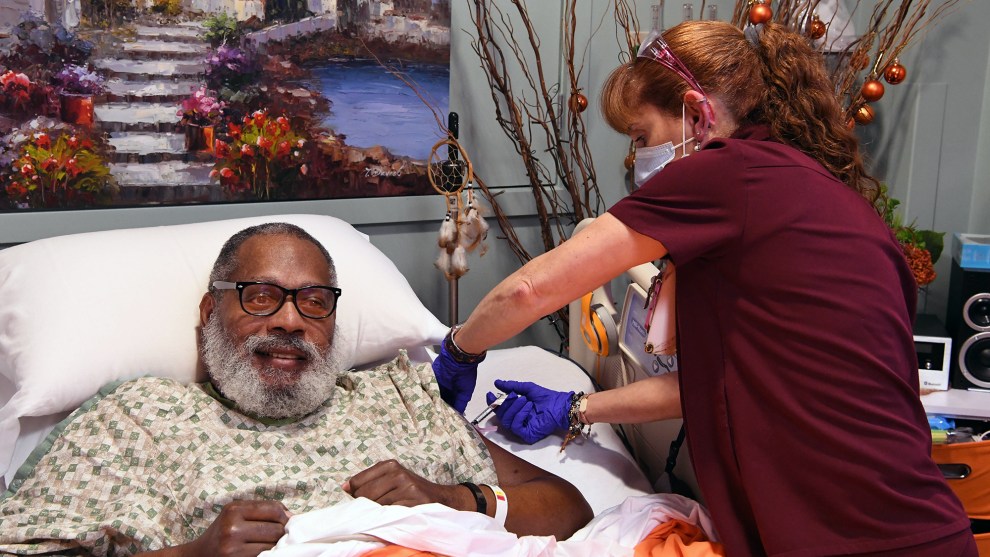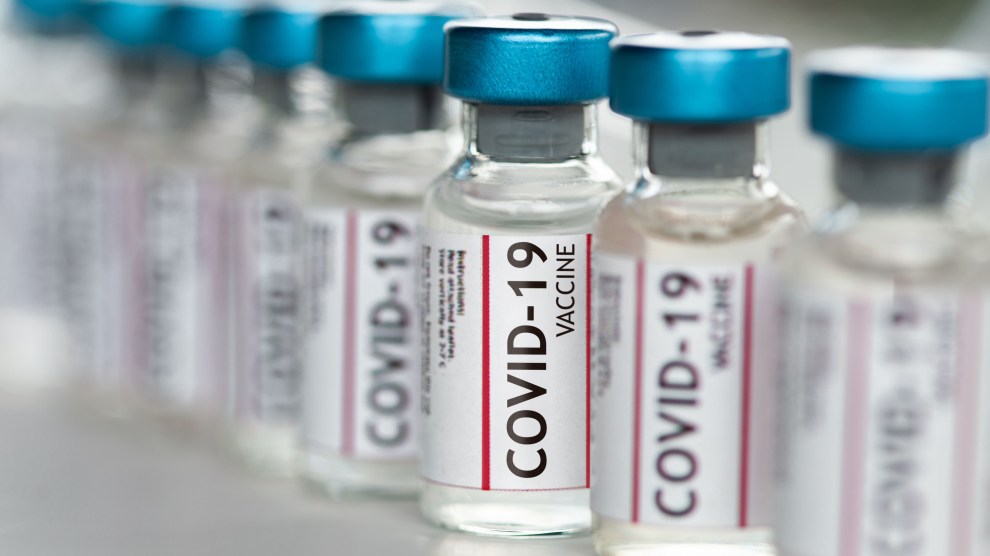
A patient at the Lebanon VA Medical Center receives a COVID-19 vaccine.Doug Wagner/Veterans Administrat/Planet Pix/ZUMA
This is a week of good news and not-so-good news as we approach the one year anniversary of the coronavirus pandemic in the US. The good news is that a new one-dose coronavirus vaccine from Johnson & Johnson has recently been approved, and President Joe Biden says there’ll be enough vaccine for every American adult by the end of May. But what’s concerning is that a new coronavirus variant in New York City has been identified—and is spreading—with no clarity about how effective vaccines might be against this variant. Also, new data shows significant structural and racial disparities in who is receiving the vaccine, and who is still waiting in line.
On this week’s episode of the Mother Jones Podcast, Kiera Butler and Edwin Rios, two reporters who have been on the pandemic beat for the past year, join host Jamilah King to provide much-needed context about what this all means.
Butler, a senior editor and public health reporter, explains that while the Johnson & Johnson vaccine has lower efficacy rates than the Pfizer or Moderna vaccines, it is still highly effective at fending off the worst outcomes of coronavirus infections. “It prevents hospitalization and death 100 percent of the time,” she tells Jamilah King on the podcast.
While millions of vaccine dosages have been shipped out this week, and vaccination rates are on the rise, there are concerning reports of low vaccination rates among communities of color—the very the same communities that have been disproportionately affected by the coronavirus pandemic itself. Black, Latino, and Native Americans have been dying of COVID-19 at twice the rate of white Americans. Those disparities widen in younger age groups. Despite the fact that Black Americans account for 16 percent of COVID deaths, they have received just six percent of the first dose rollout. “The pandemic exacerbates preexisting inequities,” Rios says. “It’s not as if those barriers to access go away when the vaccine rollout starts.”
One such major barrier for some trying to schedule their vaccine appointments is as simple as internet access. In Butler’s reporting on a rural town in Georgia, she found that lack of reliable access to the internet was an impediment for many who were trying to make vaccine appointments online. These difficulties were even more serious for older adults who are less comfortable with the online booking process. “Elderly folks with younger people in their lives who have the time and wherewithal to constantly refresh websites and try to make appointments, they are getting the vaccine,” says Butler. “Whereas folks who don’t have that are having a much harder time.”
Finding ways around the social and economic inequities in vaccine distribution will require some ingenuity, and Biden has already announced it as a priority for his administration. He is granting millions of dollars to groups that aim to counter vaccine hesitancy in Black, Hispanic, Asian, and Native American communities. Rios says the key will be making sure that those groups actually reach trusted messengers with clear, consistent, and multi-lingual information. “Go where the people are at. If they’re at churches, go to churches,” he tells Jamilah King on the podcast. “What you want to do is eliminate the barriers that have been put in place before.”














